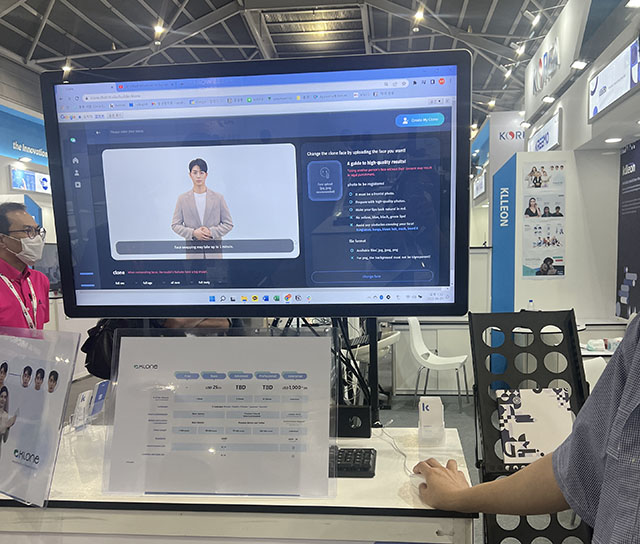
Digital humans will soon populate the metaverse and virtual environments. The idea of digital humans evokes mixed feelings of hope and skepticism. Will it replace people’s jobs or make work more productive? Eugene Ovcharenko, of Lucid Reality Labs, defines a digital human as “a variation of an artificial human, a 3D model of a created or captured human shape, with capabilities to mimic, imitate or even learn behavior patterns, seeming as lifelike as possible.” Digital human creation technology is not new. Some of the large companies are Microsoft, Samsung, Tencent, Nvidia, Bar-Ilan University. You might have seen the Samsung #TeamGalaxy commercial featuring Lil Miquela, a digital influencer with over 3 million subscribers on Instagram. China and Korea introduced their own AI-powered news anchors.
Read:Singapore Concludes Largest Tech Event Since Border Reopening
When AI tech startup KLleon from South Korea took part in the “2022 CommunicAsia” at the Asia Tech x Singapore summit, it allowed visitors to experience its digital humans and multilingual dubbing solution. KLleon’s digital human solution, “Klone” and auto-dubbing solution “Klling,” caught my attention when I visited their exhibition booth. According to KLleon, this AI deep learning technology called Deep Human, only requires a single photo and 30 seconds of voice data to create a digital human in a faster and more efficient way than its competitors. Watching the demo version of “Klling,” an auto-multilingual dubbing service, is fascinating. Klling dubs the original language of the video into five languages while maintaining the person’s voice. The dubbing platform could change a person’s lip motion in the video close to real time.
In Singapore, KLleon is working on the digital human characters of astronauts that will be displayed on a large screen in the Singapore Science Centre Museum and is also developing AI docents for the Singapore City Gallery. They are also working with a globally renowned EdTech company, Acktec Technology, on creating digital humans of famous people and company CEOs, which will be used for company training video content. Klone could be a brand avatar, a digital influencer, a secretary introducing a company, a representative in charge of customer service, a personal tutor, a show host and more. Over 7,000 gestures are ready to express thousands of body movements without filming. A large media organization could create its own digital reporter or anchor without having to film anything. Such virtual anchors are useful for breaking or emergency broadcasts. Maeil Broadcasting Network Inc. (MBN), a South Korean cable TV network, even has a page for their AI anchor news (https://www.mbn.co.kr/vod/programContents/845/5323), which is either labeled “Virtual Reporter News Pick” or AI anchor Kim Joo-ha.
On their YouTube channel, I watched some examples of KLleon’s deep human technology creation. In one video, a digital Yu Gwan-sun, a young female Korean independence activist organizer in the early 1900s, narrates how she led a powerful protest, shouting “long live Korea,” in the streets along with her friends. Videos created through Klone are captioned as Digital Human or Digital AI Influencer. KLleon’s virtual human, Woojoo, trended on TikTok with over 2 million views. Testing is possible at klone.chat studio where you could try out the Text to Speech and face synthesis for a limited period. To prevent misuse of the technology, it creates a low resolution.
In a conference call, Seolhoon, the Business Development Manager, Seihee, the Communication Director and I discussed my apprehensions about Klone being used for deep fake purposes. They told me that Klone’s customized platform is limited to enterprise accounts or per project basis. Content creators could not avail of the technology unless they are connected to an enterprise that subscribed to Klone. How will the world coexist with digital humans? Seolhoon cited the example of a digital Jose Rizal in the classroom. Imagine the possibilities for our educational technology. A digital Jose Rizal would come to life in a video format to narrate how he fought for freedom in a silent but powerful way. The goal is not to replace the teacher, but to make them more productive. Teachers could then focus their efforts on other parts of the syllabus. Digital humans won’t replace humans just like computers didn’t. Technology can’t replace the human touch.
First published at the Sunday Business & IT, The Manila Times July 17, 2022.
